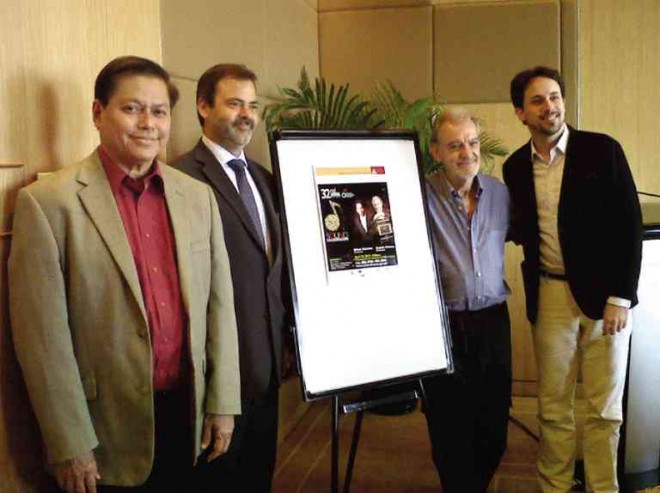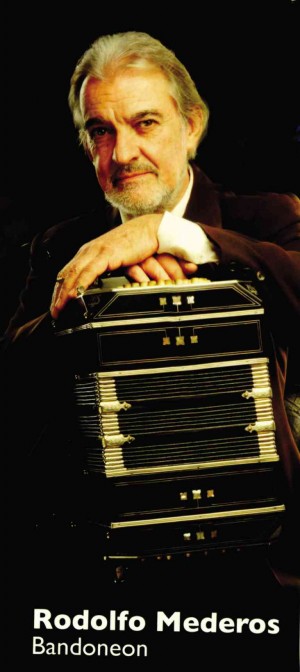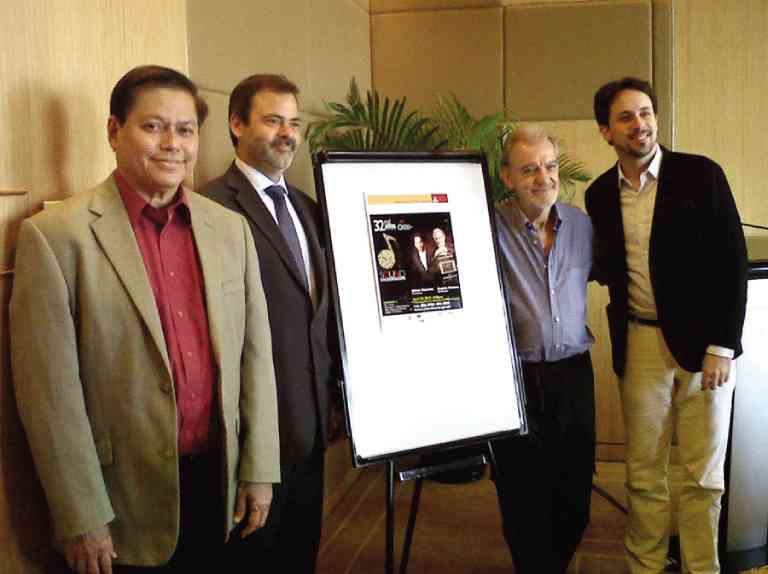

In the early 1950s, in a suburban town in Argentina, a Polish migrant, living near the wrong side of the tracks, bit by bit constructed his own hovel made of bricks.
When the structure completed, he invited a very young neighbor, Rodolfo Mederos, to a little celebration and took out a bandoneon, a musical instrument similar to the more familiar accordion and harmonica, and started to play.
Rodolfo was entranced, and he went on to become a famous tango master and bandoneonist.
“I would say that I am a mix of many things,” Mederos once said.
He was, after all, at one time or another, a biologist, carpenter, filmmaker, teacher and collector. But composing, teaching and performing the bandoneon has been his major preoccupation and advocacy for many years now.
“I started to take bandoneon lessons under the direction of a teacher who performed at a local orchestra,” he recalled. “So I was subjected to the teaching methods of the time. But I believe that musicians make music regardless of their musical education. I was a very poor student. I’m an inborn anarchist. I did a lot of studying.”
Mederos, now 75, was in Manila last week. He thrilled audiences during a concert at the Cultural Center of the Philippines (CCP) with the Philippine Philharmonic Orchestra headed by Olivier Ochanine.
Earlier, through an interpreter, he spoke to the media during a press conference at Manila Diamond Hotel.
Philippine favorite
Present were Argentine Ambassador Roberto Bosch, CCP president Raul Sunico and Ochanine.
“We would like the Filipino people to know more about Argentina and its music,” said Bosch. “Music is a special way to approach people.”
Sunico noted that the tango was also a favorite dance in the Philippines.
Mederos recalled that he was of humble origin, an only child (“unico hijo”) of hardworking parents. His parents gave him a bandoneon, and his mother sang him tango tunes. His father, however, was not keen on his being a professional musician, feeling this was for lazy people and a great waste of time (“un gran pejuicio”).
From Cordova City he eventually moved to the capital city of Buenos Aires, Evita Peron’s Big Apple, where he made a name for himself, but only after much time had elapsed (“despsues de mucho tiempo”).
Mederos said there were three different rhythms, three artistic expressions, music, poetry and dance in the tango.
“It is a complete university,” he raved. “There is nothing to add to it. It is rich, profound, marvelous. The tango is a complete work, it is the expression of a complete country. It is a popular expression with roots among the people, in the common ownership of the people. ”
Asked what made tango different from other dances, he replied: “Amor” (love).
Threatened
The master bandoneonist recalled that at one time the tango disappeared for years in Argentina, but then came a resurgence.
And now, while it is everywhere, it is threatened by “a world ruled by market forces.” It is becoming a difficult task to promote the tango, he said, and “local music has become collateral damage.”
Sunico shared that the situation was not unique to Argentina: “We have a common goal, a common advocacy. We have the folk dances, the kundiman, and we are documenting these to pass on the old forms to the next generation.”
Mederos concluded: “Some say save our environment, so save also our culture. We have to get up every morning to obtain enthusiasm for this. I want to recreate the past but not in a romantic way. I will not quit.”









































